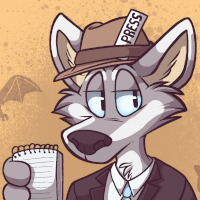Swallowtail and Sword, by H. Leighton Dickson – Book Review by Fred Patten
by Patch O'Furr
Submitted by Fred Patten, Furry’s favorite historian and reviewer.
 Swallowtail and Sword: The Scholar’s Book of Story and Song, by H. Leighton Dickson
Swallowtail and Sword: The Scholar’s Book of Story and Song, by H. Leighton Dickson
Seattle, WA, CreateSpace, April 2015, trade paperback $11.99 (255 pages), Kindle $2.99.
This is an interlude, because it comes after Book 3, Songs in the Year of the Cat, the last published, but before Book 4, Bones in the Year of the Dragon, which has not been published yet.
“Before there was a Shogun, before there was a Journey, there was a Story.
Not just one story, but many. Stories of myth and legend and Ancestors; of horses and lions and mountains and monkeys. Of life and death and those in between and how you can see them if only you try. If you sit quietly and listen deeply, you might hear something you’ve never heard before. You might know something you’ve never known and you might understand how we came to be the people we are. It is elusive, I grant you. Cats are, after all, an inscrutable people.” (p. 7)
So begins Swallowtail and Sword: The Scholar’s Book of Story and Song. With stories, but there are also songs. And steel. “Much steel, for cats are warriors and our armies are the envy of the world.” (p. 8) And tea. And much more. If you have read Books 1-3 of Tails of the Upper Kingdom (and if you haven’t, why haven’t you?), you will know of that far-future Oriental Empire, and of some of its politics and its expeditions to the far West and its discovery that humans still exist. And are preparing to reclaim the world.








